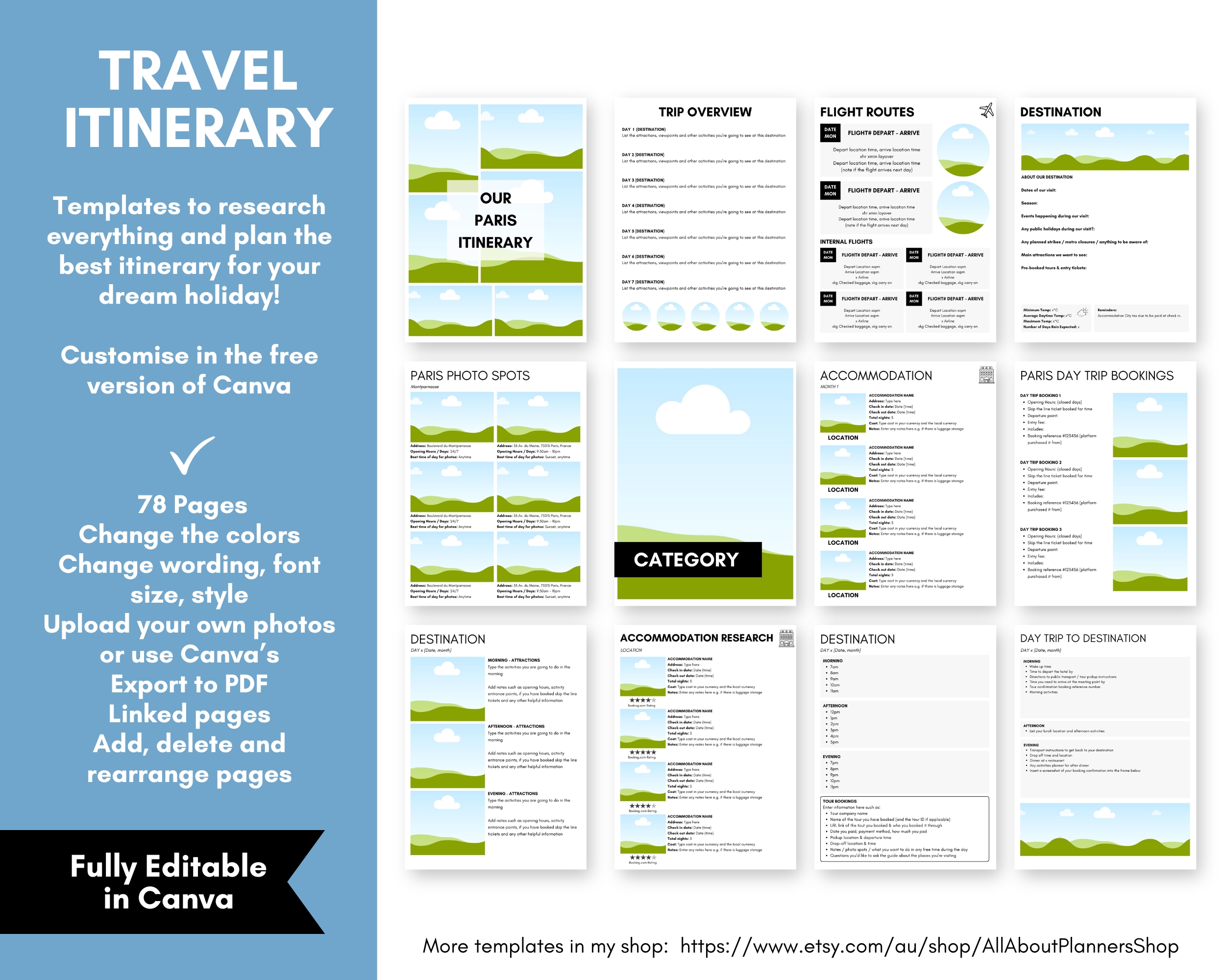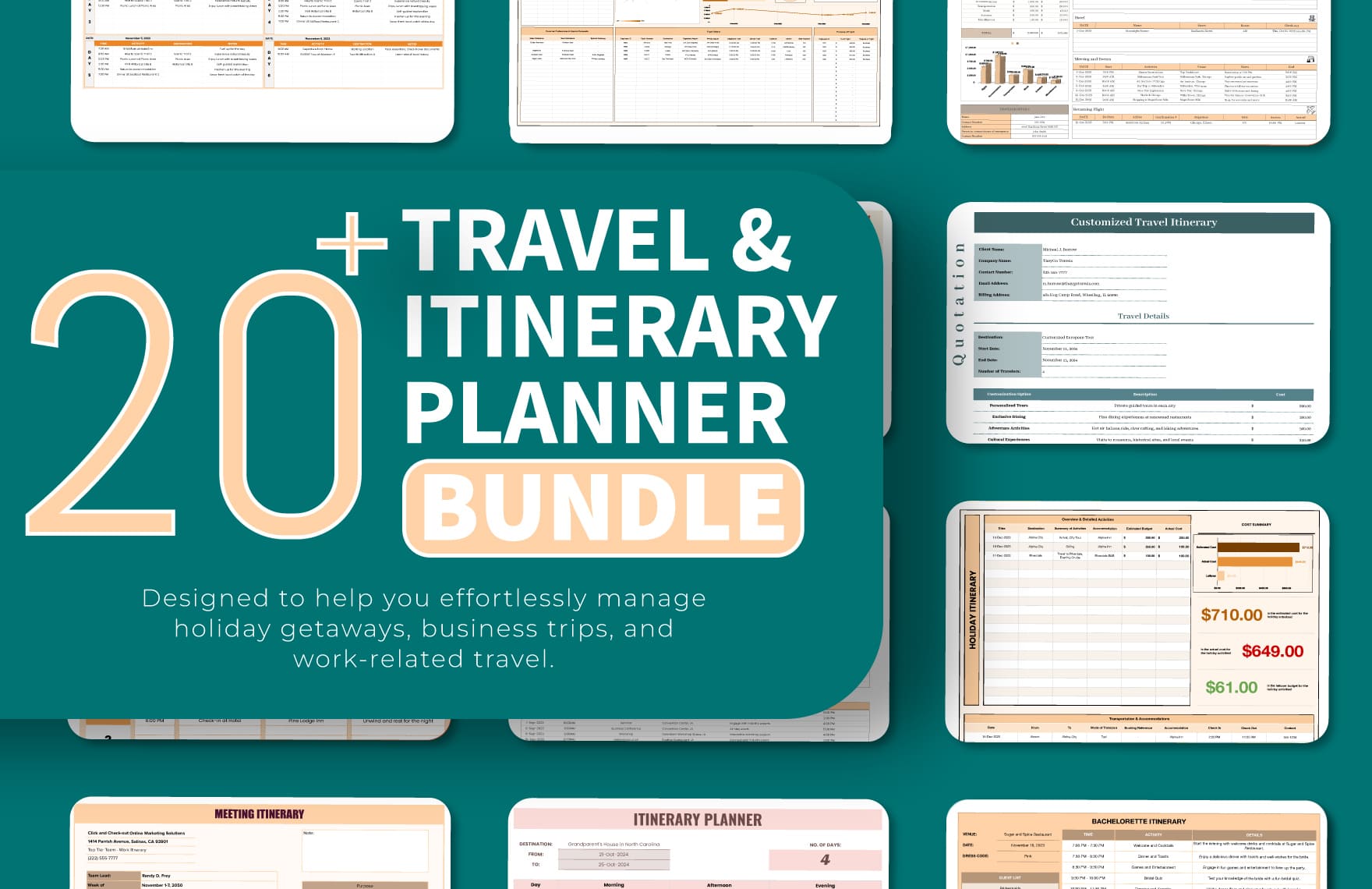Planning a business trip can feel overwhelming. You have meetings to attend, flights to catch, and deadlines to meet.
But what if you had a clear, simple itinerary that keeps everything on track? Creating a well-organized business travel trip itinerary can save you time, reduce stress, and help you focus on what really matters—your work. You’ll learn easy steps to build an itinerary that fits your needs perfectly.
Keep reading to discover how to make your next business trip smoother and more productive.
Planning Your Business Trip
Planning a business trip needs careful thought. It helps you stay organized and focused.
A clear plan saves time and reduces stress during your travel.
Setting Clear Objectives
Define what you want to achieve on your trip. Clear goals guide your daily schedule and meetings.
- List your main business goals
- Decide on key people to meet
- Set deadlines for tasks during the trip
- Plan time for follow-up actions
Choosing The Right Destination
Pick a location that matches your objectives. Consider travel time, costs, and local business culture.
| Factor | Consideration |
| Travel Time | Choose shorter routes to save time |
| Cost | Check flights and accommodation prices |
| Business Culture | Research local customs and work styles |
| Safety | Review travel advisories for the area |
Budgeting Essentials
Plan your budget to avoid overspending. Include all travel, lodging, and meal costs.
Key budget items to track:
- Airfare and transportation
- Hotel or lodging
- Meals and daily expenses
- Conference or meeting fees
- Unexpected costs

Credit: allaboutplanners.com.au
Booking Transportation
Booking transportation is a key part of a business travel itinerary. It ensures you arrive on time and ready for meetings.
Choose the best options for flights, trains, and local travel to save time and avoid stress.
Selecting Flights And Trains
Pick flights or trains that fit your schedule and budget. Look for direct routes to save travel time.
Book tickets early to get better prices and seat choices. Check the baggage rules before you book.
Arranging Local Transport
Plan how you will move around once you arrive. Use taxis, ride-shares, or public transport depending on the city.
Reserve rental cars if you need to visit places outside the city or travel at odd hours.
Tips For Cost Savings
Compare prices across different travel sites to find the best deals. Use flexible dates if possible.
- Book early to avoid higher last-minute prices
- Choose economy or standard class tickets
- Use company discounts or loyalty programs
- Consider traveling during off-peak hours
- Check if combining different transport saves money
Securing Accommodation
Finding the right place to stay is important for business travel. It can save time and reduce stress during your trip.
This guide covers how to pick good locations, compare hotels, and use loyalty programs for your stay.
Picking Convenient Locations
Choose accommodation close to your meeting places or transport hubs. This helps you avoid long travel times and traffic delays.
- Near the business center or office
- Close to airports or train stations
- Accessible to restaurants and services
- Safe and well-lit neighborhoods
Comparing Hotel Options
Look at different hotels to find the best fit for your needs and budget. Check prices, amenities, and reviews carefully.
| Hotel | Price per Night | Free Wi-Fi | Breakfast Included | Distance to Office |
| Hotel A | $120 | Yes | No | 0.5 miles |
| Hotel B | $100 | Yes | Yes | 1.2 miles |
| Hotel C | $90 | No | Yes | 0.8 miles |
Using Loyalty Programs
Joining hotel loyalty programs can earn points and perks. These benefits may include room upgrades and free nights.
- Sign up before booking your stay
- Use points to reduce costs
- Check if your company has partnerships
- Track your rewards for future trips

Credit: www.highfile.com
Organizing Meetings And Events
Planning meetings and events is key for a smooth business trip. Good organization saves time and stress.
Focus on clear schedules, detailed agendas, and time zone differences. This helps keep everything on track.
Scheduling Appointments
Set meetings early to avoid conflicts. Confirm dates and times with all participants before the trip.
Use calendars or scheduling apps to keep track. Block travel time between appointments.
- Check availability of all attendees
- Leave buffer time between meetings
- Send reminders before each appointment
Preparing Meeting Agendas
Create clear agendas to guide each meeting. List topics and goals to keep discussions focused.
Share the agenda with participants ahead of time. This helps everyone prepare and contribute.
- Include meeting objectives
- Assign time for each topic
- Note any required materials
Managing Time Zones
Know the time zones of all meeting locations. This avoids confusion and missed appointments.
Use tools to convert times and schedule meetings at convenient hours for all parties.
- Check local time differences
- Schedule meetings during work hours
- Confirm time zone in all invites
Packing And Preparation
Business travel requires careful planning. Packing smart ensures a stress-free trip.
Let’s explore the essentials to carry for a successful business trip.
Essential Documents To Carry
Having the right documents is vital for any business traveler. Check this list to ensure you have everything you need.
- Passport or ID
- Business cards
- Travel itinerary
- Hotel reservations
- Meeting confirmations
- Emergency contacts
Packing Smart For Business
Smart packing saves time and space. Use a carry-on to avoid baggage claim delays.
| Item | Quantity |
| Business suits | 2 |
| Casual wear | 3 sets |
| Dress shoes | 1 pair |
| Toiletries | Travel size |
Tech And Connectivity Needs
Stay connected and productive with the right tech tools. These items will help you maintain communication and efficiency.
- Laptop and charger
- Smartphone and charger
- Portable power bank
- International adapter
- Noise-canceling headphones
Creating A Detailed Itinerary
Planning a business travel trip needs a clear and detailed itinerary. It helps you stay organized and meet all your goals.
A good itinerary shows your daily schedule and gives you space to rest. It also keeps everyone informed.
Structuring Daily Activities
Break your day into clear time blocks. Include meetings, travel, and work tasks. This helps use your time well.
- List the meeting times and locations.
- Set time for travel between places.
- Include breaks for meals and quick rests.
- Plan work sessions or calls.
- Note any deadlines or important reminders.
Including Downtime
Downtime helps you stay fresh and focused. Add short breaks and free time in your itinerary.
| Time | Activity | Purpose |
| 12:00 PM – 12:30 PM | Lunch Break | Rest and recharge |
| 3:00 PM – 3:15 PM | Coffee Break | Relax and refresh |
| 6:00 PM – 7:00 PM | Free Time | Personal activities |
Sharing Itinerary With Stakeholders
Share your itinerary with team members and clients. This keeps everyone on the same page.
Use these tips to share your itinerary:
- Email a copy to all involved
- Use shared calendars for updates
- Provide contact details for quick questions
- Update the itinerary if plans change
Maximizing Productivity On The Road
Planning a business trip involves more than just booking flights and hotels. A well-structured itinerary can help you stay productive while traveling.
Here’s how to make the most of your time on the road, ensuring you remain efficient and focused throughout your journey.
Staying Healthy And Energized
Your health is crucial when traveling for business. Maintaining energy levels ensures you’re at your best during meetings and work sessions.
- Drink plenty of water to stay hydrated.
- Pack healthy snacks like nuts and fruits.
- Get enough sleep by adjusting to the new time zone early.
- Incorporate short workouts or stretches into your daily routine.
Utilizing Travel Time Effectively
Travel time offers a unique opportunity to get work done. Use these moments wisely to keep up with tasks.
| Activity | Travel Phase |
| Check emails | Waiting at the airport |
| Read reports | During flight |
| Plan meetings | On the train |
Handling Unexpected Changes
Travel plans can change suddenly. Being prepared helps you adapt without losing productivity.
Keep a flexible schedule and have backup plans. Use apps to track flights and accommodations for real-time updates.
Remember to stay calm and communicate changes with your team promptly to manage any impact.

Credit: www.template.net
Frequently Asked Questions
What Is A Business Travel Trip Itinerary?
A business travel trip itinerary is a detailed plan outlining your travel schedule. It includes flights, meetings, accommodations, and activities. It helps organize your trip efficiently, saving time and reducing stress. A well-crafted itinerary ensures you stay on track and meet all your business objectives smoothly.
How Do I Create An Effective Travel Itinerary?
Start by listing all travel details: flights, hotels, meetings, and transport. Use digital tools or templates to organize information clearly. Prioritize important meetings and allow buffer times. Include contact details and confirmation numbers. Review and update regularly to stay flexible and prepared throughout your trip.
Why Is An Itinerary Important For Business Trips?
An itinerary improves time management and keeps you organized. It helps avoid missed meetings and reduces travel-related stress. It also serves as a reference for expenses and travel confirmations. Overall, an itinerary boosts productivity and ensures a smooth, successful business trip experience.
What Details Should I Include In My Itinerary?
Include flight times, hotel reservations, meeting schedules, and transport arrangements. Add contact information for all parties and emergency numbers. Note down important addresses and local time zones. Including meal breaks and free time helps balance work and rest during your trip.
Conclusion
Creating a clear business travel itinerary saves time and stress. It helps you stay on track and meet all appointments. Plan your flights, meetings, and downtime carefully. Keep important details like addresses and contacts handy. Review your itinerary before traveling to avoid surprises.
A good plan makes your trip smoother and more productive. Stay organized and flexible to handle any changes. A well-made itinerary supports your work goals and travel needs.